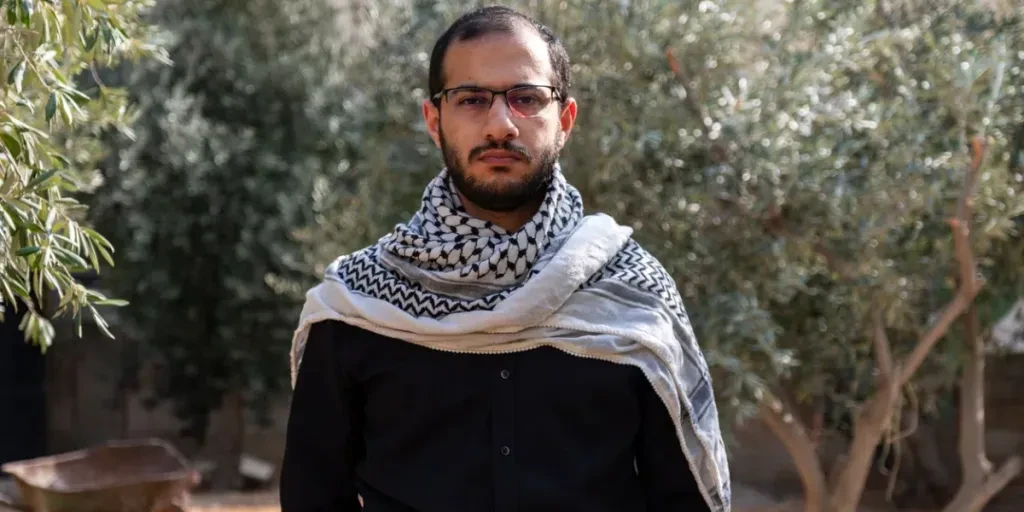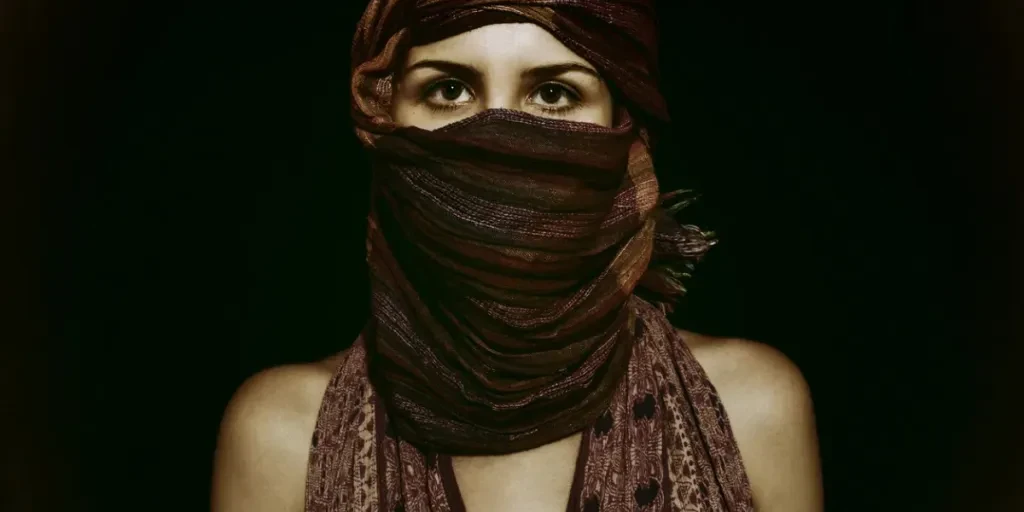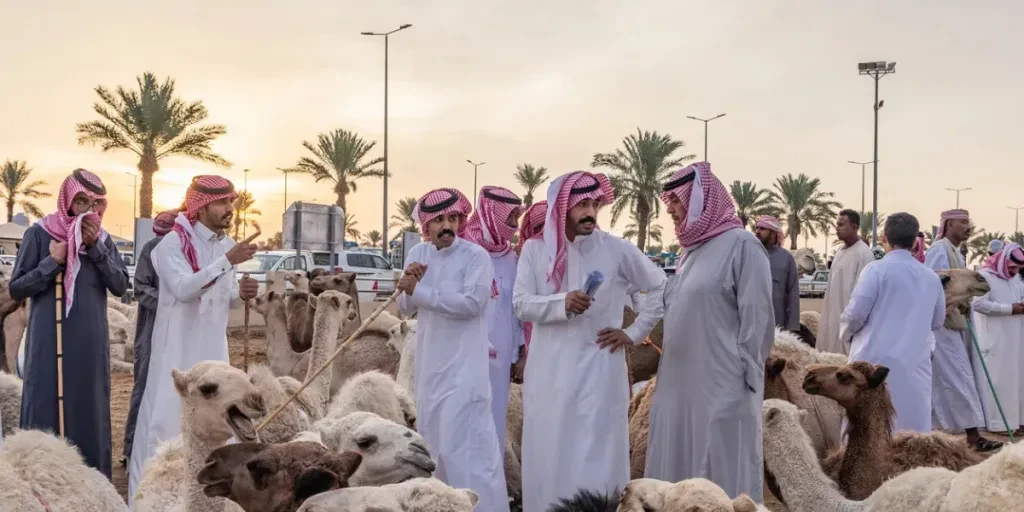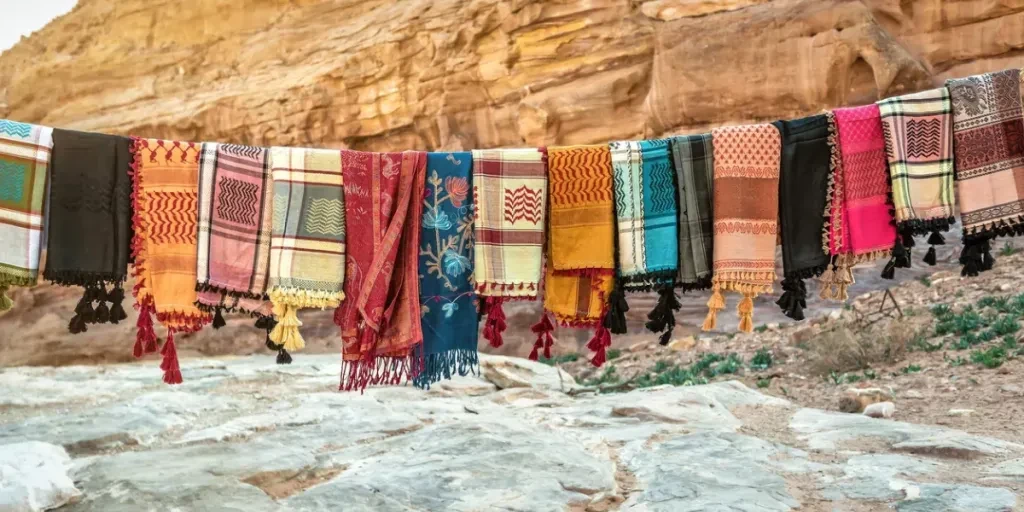The Keffiyeh, a traditional Middle Eastern headscarf, has transcended its cultural roots to become a global fashion statement. This versatile accessory, known for its distinctive patterns and rich history, is now embraced by fashion enthusiasts worldwide. As the Keffiyeh gains popularity, it is essential to understand its market dynamics, cultural significance, and evolving designs.
Table of Contents:
Market Overview: The Rising Popularity of Keffiyeh in Global Markets
The Evolution of Keffiyeh Design: Tradition Meets Modernity
Cultural Influence: The Keffiyeh as a Symbol of Identity
Seasonality and Comfort: Adapting the Keffiyeh for All Seasons
Market Overview: The Rising Popularity of Keffiyeh in Global Markets

The Keffiyeh has seen a significant rise in popularity across global markets, driven by its unique blend of cultural heritage and modern fashion appeal. According to Research and Markets, the global apparel market is expected to grow at a compound annual growth rate (CAGR) of 5.3% from 2023 to 2028, with the Keffiyeh playing a notable role in this expansion. This growth is attributed to several factors, including the increasing demand for culturally significant fashion items and the influence of social media in promoting diverse styles.
One of the key drivers of the Keffiyeh’s popularity is its versatility. Traditionally worn as a headscarf in Middle Eastern countries, the Keffiyeh has been adapted into various fashion items, including scarves, shawls, and even accessories like bags and belts. This adaptability has made it a favorite among fashion designers and consumers alike. The Keffiyeh’s distinctive patterns and colors, often featuring a black-and-white or red-and-white checkered design, have become iconic symbols of cultural identity and fashion.
Regional insights reveal that the Keffiyeh’s popularity is not limited to the Middle East. In Europe and North America, the Keffiyeh has been embraced by fashion-forward individuals and celebrities, further boosting its market presence. According to WGSN, a leading trend forecasting company, the Keffiyeh has been featured in numerous fashion shows and collections, highlighting its growing influence in the global fashion industry.
Key players in the Keffiyeh market include both traditional manufacturers and modern fashion brands. Companies like Hirbawi, one of the last remaining traditional Keffiyeh manufacturers in Palestine, continue to produce high-quality, authentic Keffiyehs. Meanwhile, contemporary brands such as Shemagh Co. and Kufiya.org have introduced innovative designs and marketing strategies to appeal to a broader audience. These brands often emphasize the cultural significance and ethical production of their products, resonating with consumers who value authenticity and sustainability.
Future trends in the Keffiyeh market indicate a continued rise in demand, driven by the growing interest in cultural fashion and sustainable practices. As reported by Research and Markets, the ethical fashion market is expected to see strong growth, with consumers increasingly seeking products that align with their values. The Keffiyeh, with its rich cultural heritage and potential for sustainable production, is well-positioned to benefit from this trend.
The Evolution of Keffiyeh Design: Tradition Meets Modernity

Patterns and Colors: A Blend of Heritage and Contemporary Fashion
The keffiyeh, a traditional Middle Eastern headscarf, has undergone significant transformations in its design, blending heritage with contemporary fashion. Historically, the keffiyeh was characterized by its distinctive black and white checkered pattern, symbolizing Palestinian identity and resistance. However, modern iterations have expanded to include a variety of colors and patterns, reflecting a fusion of cultural significance and fashion trends.
Designers like Paul Smith and Giorgio Armani have incorporated keffiyeh-inspired patterns into their collections, showcasing the versatility of this traditional accessory. The use of vibrant colors and intricate designs has made the keffiyeh a fashionable statement piece, appealing to a global audience.
Materials and Fabrics: From Traditional Cotton to Modern Blends
Traditionally, the keffiyeh was made from cotton, a material chosen for its breathability and comfort in the hot desert climate. However, contemporary fashion has seen the introduction of various materials and fabric blends, enhancing the functionality and aesthetic appeal of the keffiyeh. Modern keffiyehs are now available in silk, wool, and synthetic blends, offering a range of textures and finishes.
The use of silk, as seen in collections by Louis Vuitton and Fendi, adds a touch of luxury to the keffiyeh, making it suitable for formal occasions. On the other hand, wool and synthetic blends provide warmth and durability, making the keffiyeh a versatile accessory for different seasons. The incorporation of recycled and low-impact materials, as reported by industry experts, aligns with the growing trend of sustainable fashion, ensuring that the keffiyeh remains relevant in an eco-conscious market.
Functionality and Versatility: Beyond a Fashion Statement
While the keffiyeh has become a popular fashion accessory, its functionality and versatility remain integral to its appeal. Traditionally used for protection against the sun and sand, the keffiyeh’s practical applications have been adapted to suit modern needs. The keffiyeh can be worn as a scarf, headwrap, or even a shawl, providing warmth and protection in various weather conditions.
Designers have also introduced features such as sun protection and moisture-wicking properties, enhancing the keffiyeh’s practicality. The versatility of the keffiyeh makes it a valuable addition to any wardrobe, offering both style and functionality. As reported by fashion analysts, the keffiyeh’s ability to adapt to different styles and purposes ensures its continued popularity in the fashion industry.
Cultural Influence: The Keffiyeh as a Symbol of Identity

Historical Significance: The Keffiyeh’s Journey Through Time
The keffiyeh’s historical significance is deeply rooted in Middle Eastern culture, symbolizing resistance, solidarity, and national identity. Originating in the Arabian Peninsula, the keffiyeh was traditionally worn by Bedouins and farmers as protection against the harsh desert environment. Over time, it became a symbol of Palestinian identity and resistance, particularly during the Arab Revolt in the early 20th century.
The keffiyeh’s journey through time reflects its enduring cultural importance, with its symbolism extending beyond the Middle East. According to historical accounts, the keffiyeh has been adopted by various movements and communities worldwide, representing solidarity and resistance against oppression. Its cultural significance continues to resonate, making it a powerful symbol of identity and heritage.
Regional Variations: Unique Styles Across Different Cultures
The keffiyeh’s design and usage vary across different regions, reflecting the diverse cultural contexts in which it is worn. In Palestine, the black and white checkered pattern is most common, while in Jordan, the red and white keffiyeh, known as the shemagh, is widely worn. Each variation carries its own cultural significance and symbolism, highlighting the keffiyeh’s adaptability and relevance across different cultures.
Designers have embraced these regional variations, incorporating unique styles and patterns into their collections. The use of different colors, patterns, and materials allows for a diverse range of keffiyeh designs, catering to various cultural preferences and fashion trends. As reported by fashion experts, the keffiyeh’s ability to transcend cultural boundaries and adapt to different styles makes it a versatile and enduring accessory.
Seasonality and Comfort: Adapting the Keffiyeh for All Seasons

Lightweight Options for Summer
The keffiyeh’s adaptability extends to its suitability for different seasons, with lightweight options available for summer. Traditionally made from breathable cotton, the keffiyeh provides comfort and protection in hot weather. Modern designs have introduced lightweight fabrics such as linen and silk, offering a cool and comfortable alternative for summer wear.
Designers like Emporio Armani and Dolce & Gabbana have incorporated lightweight keffiyehs into their summer collections, showcasing their versatility and appeal. The use of lightweight materials and breathable fabrics ensures that the keffiyeh remains a practical and stylish accessory for warm weather, as reported by fashion analysts.
Insulated Designs for Winter
In contrast, insulated designs provide warmth and protection during the colder months, making the keffiyeh a versatile accessory for winter. Wool and synthetic blends offer insulation and durability, ensuring that the keffiyeh remains functional and comfortable in cold weather. Designers have introduced features such as fleece lining and thermal properties, enhancing the keffiyeh’s suitability for winter wear.
The use of insulated materials and innovative designs ensures that the keffiyeh remains a practical and stylish accessory for all seasons. As reported by industry experts, the keffiyeh’s ability to adapt to different weather conditions and provide comfort and protection makes it a valuable addition to any wardrobe.
Conclusion
The keffiyeh’s evolution from a traditional Middle Eastern headscarf to a global fashion accessory reflects its enduring cultural significance and adaptability. By blending heritage with contemporary fashion, the keffiyeh has become a versatile and stylish accessory, suitable for various occasions and seasons. As designers continue to experiment with patterns, materials, and functionalities, the keffiyeh’s relevance in the fashion industry is set to grow, ensuring its place as a timeless symbol of identity and style.




